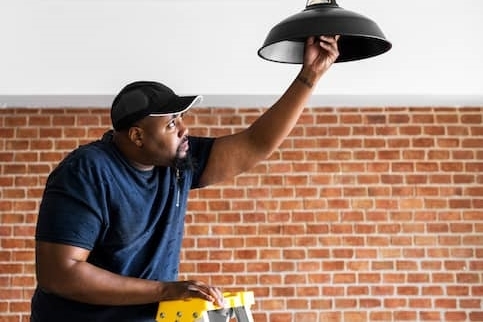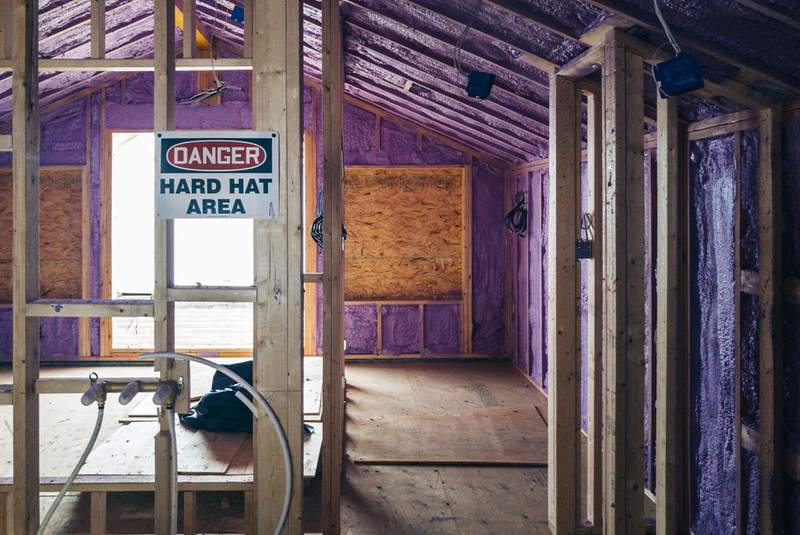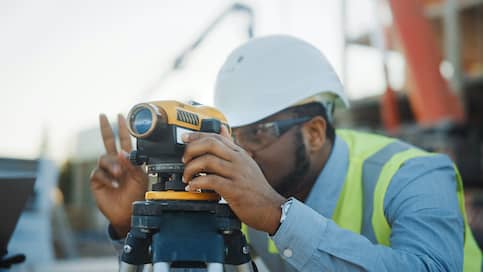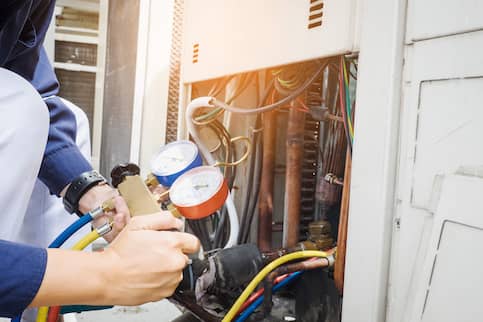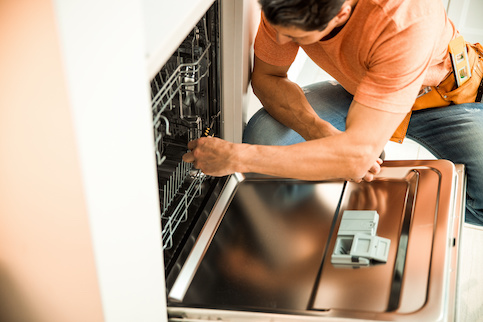You’ve purchased your home and are settled in. Now it’s time to think about maintenance costs.
Every home, even one that is newly built, requires annual maintenance, everything from fresh coats of paint and new carpeting to replacement hot water heaters, updated windows and new wiring. In fact, American Family Insurance recommends that homeowners plan on spending 1% of their home’s total purchase price each year in maintenance costs.
If you spent $250,000 on your home, expect to spend $2,500 a year, or about $209 a month, on home maintenance.
It’s important, then, to gather the tools you’ll need to handle at least some of this maintenance. Fortunately, you won’t have to buy an entire hardware store to keep your home in sound shape. Instead, you’ll need about 10 main tools.
See What You Qualify For
You can get a real, customizable mortgage solution based on your unique financial situation.
10 Must-Have Tools For Your Home
What maintenance equipment should make up your DIY toolkit? You’ll need the basics: think tape measures, hammers, pliers and screwdrivers.
Yes, that doesn’t sound overly complicated. The good news is that most of your home-maintenance and home-improvement duties can be tackled with affordable tools that you can easily find at your local hardware store.
And for the bigger jobs, such as roof repairs, plumbing fixes and new wiring? Those are jobs that you should probably leave to the professionals, no matter what tools you buy.
1. Tape Measure
If you own a home, you need a tape measure to determine how much space you have for new furniture, how tall a bathroom cabinet can stand and how high you should hang new drapes or blinds.
You’ll probably use a tape measure for most home-improvement or maintenance projects. You’ll need it, too, when making sure that you have enough space in your laundry room for that new washer or dryer or that the new dishwasher you want will fit under your kitchen counter.
Standard tape measures are typically 15 feet to 50 feet, with the most common ones measuring 25 feet.
2. Hammer
Equally as important as the tape measure is the hammer. You’ll need this tool when you’re installing shelving or cabinets, hanging pictures or putting together new furniture.
The most common type of hammer is the claw hammer, which has a face on its front used for pounding in nails and a claw on its other end that you can use to pull nails out of a wall.
Another popular type is the ball-peen hammer, which is mostly used for metal work. Instead of having a claw on one end, the ball-peen hammer has a rounded end and a flat end that you can use to pound surfaces.
There’s also the club hammer, which has two flat ends. This tool is used more like a mini sledgehammer.
3. Screwdriver Set
You’ll need a screwdriver set, too, especially if you plan on installing shelves, putting together end tables, adding or removing light switches or assembling an entertainment center for your living room. Simply put, these tools allow you to screw things together, whether the legs of your new living room chairs or the handles on your kitchen cabinets.
There are two main screwdriver types: The flat head or slotted head screwdriver is used for screws that have a slot running down their middles. The Phillips screwdriver has a pointier end and is used for screws that have a type of “X” embedded in their tops.
Because screws still come in both varieties, you should have an assortment of both Phillips and flat head screwdrivers in your toolbox.
4. Pliers
Need to grip something? Then you need pliers. This tool’s primary purpose is to grip items, whether you are trying to loosen a bolt inside your toilet’s tank or hold a nut in place as you’re fastening the front panel to your new TV stand. But that’s not the only purpose of pliers – you can also use them to bend wires, nails and sheet metal or to cut wire.
There are many types of pliers, with one of the most common being the slip-joint variety. You can adjust how wide these pliers open, giving you more flexibility when gripping, cutting or bending items.
Water-pump pliers have jaws with a curved shape and are used for gripping pipes. Linesman pliers, with a pointier nose, are especially useful for cutting wires.
5. Cordless Drill
If you plan on hanging window treatments or assembling cabinetry or need to make any hole in any type of wall, you’ll need a cordless drill. This tool comes with several drill bits, which allow you to make holes of varying sizes in walls and other surfaces. You then can use anchors and screws to secure heavy items – such as drapes, blinds, mirrors or heavier clocks – to a wall using the holes you’ve drilled.
A cordless drill gives you more flexibility than one that must always be plugged into an electrical outlet. Once you charge it, you can drill wherever you need, regardless of whether you are near an outlet. Just be sure to charge your drill before you need to use it.
Take the first step toward buying a house.
Get approved to see what you qualify for.
6. Stud Finder
If you’re hanging something heavy on your walls, you’ll need an electronic stud finder. Otherwise, that heavy picture, clock or mirror might one day come crashing down from your wall.
Studs are boards that are hidden behind the walls in your home. When you are hanging heavier items, you’ll use a stud finder to locate them. You can then drill through the wall and into the studs. When you hang your heavy art, TV, mirror or other item, you will now have more support.
You can hang lighter items – such as smaller framed pictures – directly into your dry wall using screws and anchors. But if you do this with heavier items, that large, framed piece of art or your flat-screen TV might tear out of the wall, damaging both the item and your wall.
7. Wrench
Wrenches are key items for your home-maintenance and -repair toolbox. And because there are so many kinds of wrenches, plan on buying several.
Wrenches are used to loosen and tighten fasteners such as nuts and bolts. You might use a wrench to loosen the nuts and bolts securing your toilet to the floor or when changing out a leaky pipe under your kitchen sink.
One popular type of wrench is the adjustable wrench. As its name suggests, this wrench features a movable lower jaw, allowing you to adjust the size of its grip. This makes it useful for tightening or loosening several sizes of nuts and bolts.
You should also invest in multiple combination wrenches. These wrenches have an open end that you can wrap around nuts and bolts and a closed, circular end that you can slip over nuts and bolts for a more secure grip. These come in several sizes.
If you need to replace the plumbing under your kitchen or bathroom sink, a basin wrench is a must-have. This wrench makes it far easier to tighten or loosen nuts and hose couplings that are tucked into places that are difficult to reach with standard wrenches.
8. Utility Knife
If you need to cut just about anything? A utility knife is the right tool.
A utility knife is basically a razor blade tucked into a plastic or metal body. It comes with a button that you use to extend and retract the blade. Many allow you to change out blade sizes, though others come with just one permanent blade.
You can use your utility knife to cut open packaging when new furniture, window air-conditioning units, computers or TVs are delivered to your home. You can also use this tool to cut drywall if you’re installing new walls in your basement, bedroom or other area of your home.
9. Level
Need to hang kitchen cabinets? Or maybe you are hanging a large mirror in your bedroom or a shelving unit in your dining room. You’ll need a level to make sure you are hanging these items properly.
A level is a tool that you use to determine whether a surface is perfectly horizontal or vertical. This is important: If you don’t use a level you might accidentally hang those kitchen cabinets on an angle, or that flat-screen TV might hang crooked on your wall.
The most basic of levels is known as a carpenter’s level. It has a clear space in its middle and at both ends, each one holding a vial. Inside the vial is a bubble floating in liquid. To use this, set your carpenter’s level on a flat horizontal or vertical surface. If the bubble floats to the center of the vial, your surface is level and you can hang your artwork, TV or shelves with confidence.
Torpedo levels are similar but are smaller. You’ll use this type of level to get readings where a standard carpenter’s level won’t fit.
You can take a higher-tech approach with a laser level. This type of level uses a laser to measure whether a horizontal or vertical surface is level.
10. Flashlight
What if the power in your home goes out? What if you need to study the pipes in a dark corner of your basement? What if you need to find a blown fuse when the lights are out? A flashlight is the right tool.
Flashlights are always handy. Make sure to keep yours stocked with fresh batteries. You don’t want to be searching for batteries when the power goes out.
See What You Qualify For
Buy A Home
Discover mortgage options that fit your unique financial needs.

Refinance
Refinance your mortgage to have more money for what matters.
Tap Into Equity
Use your home’s equity and unlock cash to achieve your goals.
The Bottom Line
Owning a home remains part of the American dream for many. Just be aware that maintaining that dream does require yearly maintenance. You’ll need the right tools to tackle the minor, and not-so-minor, repairs and maintenance that pop up each year.
Ready to Find Out What You Qualify For?
See options that work for your unique financial situation.

Dan Rafter
Dan Rafter has been writing about personal finance for more than 15 years. He's written for publications such as The Washington Post, Chicago Tribune and Wise Bread.
